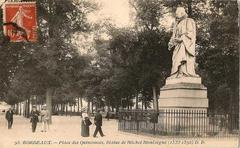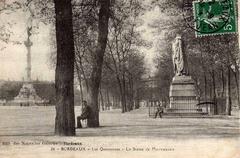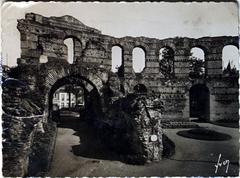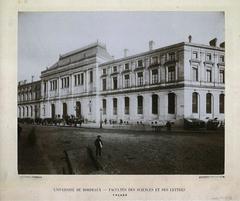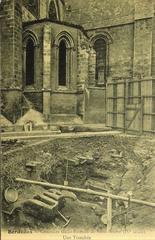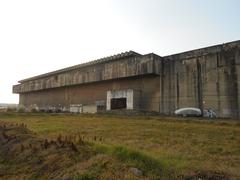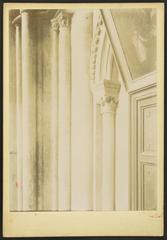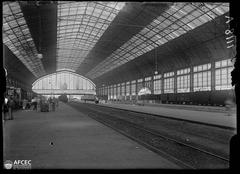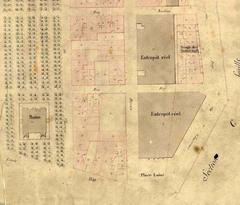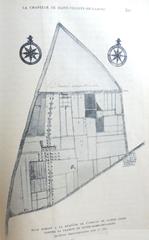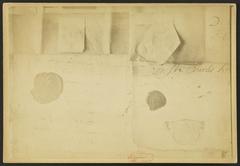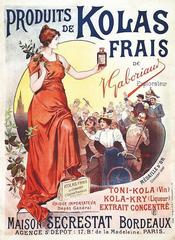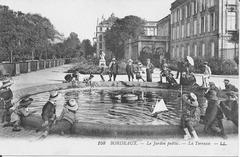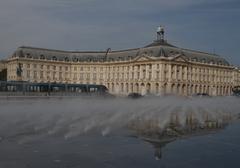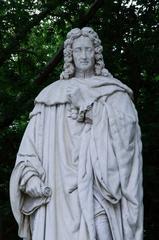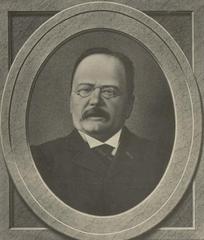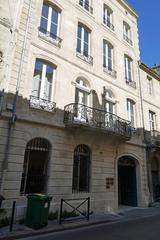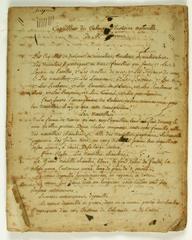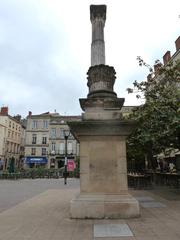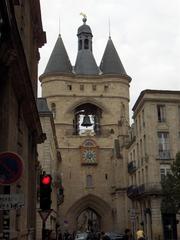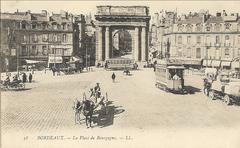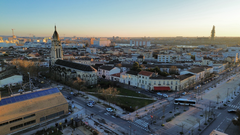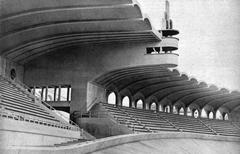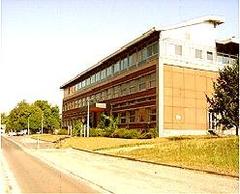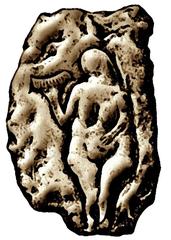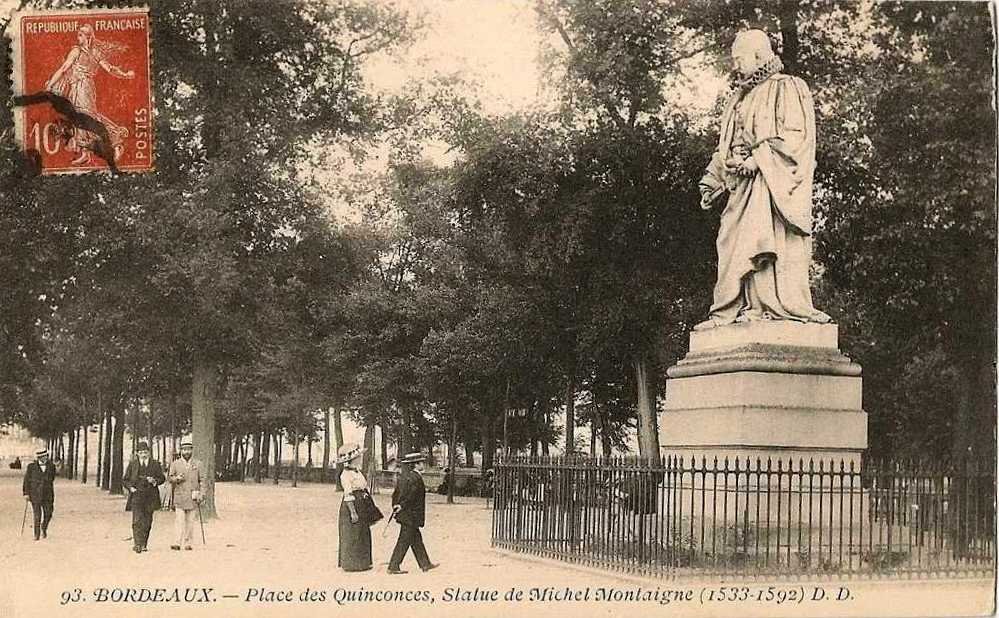
Montaigne Bordeaux Visiting Hours, Tickets, and Travel Guide
Date: 14/06/2025
Introduction: Discover Montaigne’s Bordeaux
Nestled in the heart of southwestern France, Bordeaux stands as a city steeped in history, culture, and intellectual heritage, with the legacy of Michel de Montaigne at its core. Born in 1533 at the Château de Montaigne near Bordeaux, Montaigne revolutionized literature and philosophy by pioneering the essay, blending personal reflection and Renaissance humanism. As a philosopher, writer, and mayor of Bordeaux, Montaigne’s influence permeates the city and its surrounding region. Exploring Montaigne-related sites offers travelers a unique opportunity to immerse themselves in the cultural and political atmosphere of 16th-century Bordeaux, while enjoying the vibrant modern city and the picturesque landscapes of the Périgord.
This guide provides comprehensive information for visitors: details on the Château de Montaigne’s opening hours, ticketing, and accessibility, as well as key historical sites in Bordeaux such as the Musée d’Aquitaine, Montaigne’s tomb, and landmarks associated with his mayoral legacy. Whether you’re a history enthusiast, philosophy scholar, or cultural traveler, this guide equips you with practical tips, travel advice, and curated experiences to make your visit to Montaigne’s Bordeaux both enlightening and memorable. For official updates, consult the Château de Montaigne Official Site and Bordeaux Tourism.
Montaigne’s Legacy and Bordeaux in the Renaissance
Who Was Michel de Montaigne?
Michel Eyquem de Montaigne (1533–1592) was born at the Château de Montaigne, a family estate acquired in the 15th century. Renowned for inventing the literary essay, Montaigne’s introspective and humanist writings shaped philosophical thought across Europe. As mayor of Bordeaux, he led with pragmatism during religious conflict and public health crises, leaving a significant civic legacy (Château de Montaigne Official Site).
Bordeaux in the 16th Century
Bordeaux flourished as a commercial and cultural hub, attracting merchants, intellectuals, and political figures. The city’s architecture, including the Place de la Victoire, Grosse Cloche, and Porte Cailhau, testifies to its vibrant medieval and Renaissance heritage (Wanderlog).
Château de Montaigne: Visiting Hours, Tickets, and Highlights
Opening Hours
- Open to visitors from April to November.
- Typical hours: Tuesday to Sunday, 10:00 AM to 6:00 PM.
- Check the official website for seasonal variations or special closures.
Tickets and Prices
- Adult: €8–10
- Reduced (students, seniors): €5–7
- Children under 12: Free
- Family packages and group rates available.
- Purchase tickets online or on-site; advance booking recommended in high season.
Guided Tours and Events
- Daily guided tours cover Montaigne’s life, the château’s architecture, and his literary legacy.
- Special literary events, workshops, and cultural evenings are held, especially during summer.
- Advance booking is recommended for groups and special events (Guide du Périgord).
Accessibility
- The château and grounds are partially accessible to visitors with reduced mobility.
- Assistance is provided upon request, but access to the historic tower is limited due to its medieval structure.
- Contact ahead to discuss specific needs.
Highlights
- Visit Montaigne’s writing library, preserved with original inscriptions in Latin and Greek.
- Wander through the park designed by Pierre Magne, a listed Historic Monument.
- Enjoy the scenic Périgord countryside, ideal for reflective walks and photography.
Key Montaigne-Related Sites in Bordeaux
Musée d’Aquitaine
- Address: 20 Cours Pasteur, 33000 Bordeaux
- Hours: Tuesday–Sunday, 11:00–18:00 (closed Mondays)
- Admission: ~€6 adults; free first Sunday of each month
- Highlights: Montaigne’s Renaissance tomb, interactive exhibits on his life and work
- Accessibility: Fully wheelchair accessible, multilingual displays
- Tips: The Bordeaux CityPass covers entry and public transport (Tours in Bordeaux).
Montaigne’s Statue
A contemplative statue of Montaigne, traditionally at the museum entrance, is a favorite for visitors seeking inspiration—touching its feet is considered a ritual for wisdom (Living Nomads).
Bordeaux City Hall (Hôtel de Ville)
While not hosting permanent Montaigne exhibitions, City Hall features in walking tours that reflect on his mayoral tenure during times of religious and political upheaval (Bordeaux Tourism).
Additional Historical and Cultural Landmarks
- Place de la Bourse and Miroir d’Eau: Iconic 18th-century square with a striking reflecting pool; free and fully accessible.
- Grosse Cloche and Porte Cailhau: Medieval city gates symbolizing Bordeaux’s fortified past.
- Saint-Seurin Basilica and Palais Gallien: Sites revealing Bordeaux’s ancient and Roman history.
- Bordeaux Montaigne University: Academic center named for Montaigne, open weekdays; some events ticketed (Bordeaux Tourism).
Wine Culture and Day Trips
- Guided Vineyard Tours: Year-round in Saint-Émilion and nearby regions, with prices from €50–€120; advance booking recommended.
- Saint-Émilion: UNESCO World Heritage village, easily accessible by train, known for medieval charm and wine tastings.
- Arcachon and Dune du Pilat: Popular day trips for beaches and Europe’s largest sand dune, accessible by train.
Urban Exploration, Markets, and Cultural Events
- Rue Sainte-Catherine: Europe’s longest pedestrian shopping street.
- Chartrons, Darwin, Bacalan: Creative quarters with vibrant street art and galleries.
- Quai des Chartrons Market: Sunday morning market for local produce.
- Bordeaux Wine Festival (June): Tastings, workshops, and concerts along the river (Bordeaux Tourism Agenda).
Practical Visitor Tips
- Transportation: Bordeaux’s tram, bus, and train network efficiently connects the city and surrounding sites. Mobile ticketing is available.
- Accommodation: Book early during festivals; many hotels and guesthouses offer accessible rooms.
- Dining: Enjoy local specialties like canelés and oysters; many restaurants offer English menus and accommodate dietary needs.
- Language: French is predominant, but English is widely spoken in tourist areas; multilingual guides are available at most attractions.
- Accessibility: Most museums and modern attractions are wheelchair accessible. Some historic sites, such as the Château’s tower and Palais Gallien, have limited access.
Frequently Asked Questions (FAQ)
Q: What are the Château de Montaigne visiting hours?
A: April–November, Tuesday–Sunday, 10:00 AM–6:00 PM (check the official site for updates).
Q: How do I buy tickets?
A: Purchase online in advance or on-site; online booking is advised during peak times.
Q: Are guided tours available?
A: Yes, in French and English at Château de Montaigne and throughout Bordeaux; book in advance for group tours.
Q: Are Montaigne-related sites accessible for wheelchair users?
A: Most museums are accessible. The Château’s historic areas have limited access—contact ahead for details.
Q: What’s the best way to reach Château de Montaigne from Bordeaux?
A: Driving is recommended (about 50–60 minutes); public transport options are limited.
Q: Can I combine Montaigne visits with other attractions?
A: Yes! Use the Bordeaux CityPass for multiple sites and public transport.
Plan Your Montaigne Experience
- Start at Musée d’Aquitaine to see Montaigne’s tomb and engaging exhibits.
- Join a walking tour for insights into Montaigne’s civic and Renaissance legacy.
- Visit Château de Montaigne for an immersive look at his intellectual environment.
- Enjoy Bordeaux’s wine culture with a vineyard tour or tasting.
- Attend festivals or lectures for deeper cultural engagement.
Download the Audiala app for audio guides, real-time visiting hours, and exclusive content. For more tips, follow official tourism channels and our social media.
Visual Recommendations
- Include images of the Château de Montaigne, Montaigne’s tomb at Musée d’Aquitaine, and Bordeaux landmarks like Place de la Bourse and Grosse Cloche, with descriptive alt tags.
- Embed a map highlighting key Montaigne-related locations in Bordeaux and Saint-Michel-de-Montaigne.
Summary: Visiting Montaigne’s Bordeaux
Exploring Montaigne’s legacy in Bordeaux is a journey through Renaissance philosophy, French political history, and the region’s vibrant culture. From the tranquil towers of Château de Montaigne to the historic exhibits at Musée d’Aquitaine, visitors gain unique insights into Montaigne’s intellectual and civic contributions. Bordeaux’s lively markets, beautiful squares, and world-class wine culture complement this heritage, while day trips to Saint-Émilion and Arcachon offer added depth.
With practical information on tickets, hours, and accessibility, travelers can plan effectively. Theatrical walking tours, digital guides like Audiala, and regular cultural events enrich the experience, encouraging visitors to walk in Montaigne’s footsteps and discover the philosophical heart of Bordeaux (Guide du Périgord, Veronika’s Adventure, Living Nomads).
Sources and Official Links
- Château de Montaigne Official Site
- Veronika’s Adventure: Montaigne Walking Tours
- Living Nomads: Bordeaux Travel Blog
- Bordeaux Tourism: Museums
- Guide du Périgord: Château de Montaigne
